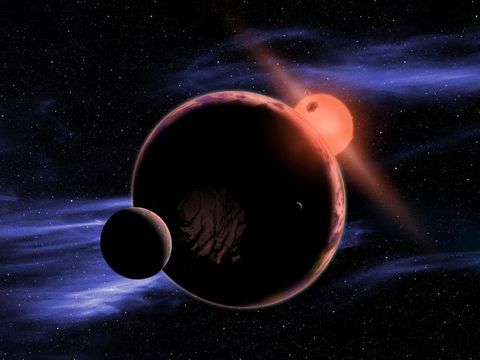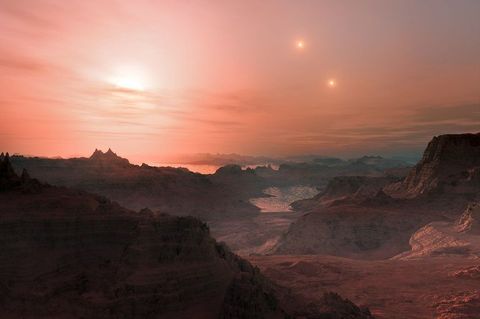
D. Aguilar/Harvard-Smithsonian Center for Astrophysics
One of the most exciting discoveries in astronomy over the last several years has been the explosion in exoplanet identification. Hundreds of worlds beyond the solar system, with the potential for Earth-like rocky planets abounding. But a new study throws some cold water on the excitement, noting that many of these younger planets have likely had their atmospheres obliterated by the stars they orbit.
Many exoplanets orbit stars known as M dwarves. An M dwarf, also known as a red dwarf, is a type of star smaller than the Earth's sun. The star closest to the solar system beyond the sun, Proxima Centauri, is an M dwarf and only around an eighth of the sun's size. They grow very slowly, so slow that no scientist has ever seen one in advanced age.
Like all stars, M dwarves have powerful magnetic fields. These magnetic fields lead to the emission of high energy X-ray and ultraviolet radiation, which is generally known as a star's energy. Young stars generally have lots of energy, enough to pulverize an orbiting planet's atmosphere. As they age, a star's activity rapidly falls off. The sun's aging is one crucial element that allowed life on Earth to blossom.
But with M dwarves, they barely age. Their radiation can continually heat a planet's atmosphere, getting upper regions past 100 degrees Celsius. In extreme cases, heat in the atmosphere can repel gasses from the planet.
Researchers based at the University of Vienna and the Space Research Institute of the ÖAW in Graz have calculated how quickly an M dwarf could lay waste to a rocky planet's atmosphere. If a planet with an Earth-like atmosphere was orbiting an M dwarf, according to researchers, its living conditions could be "lost in less that one million years, which for the evolution of a planet is almost instantaneous," according to a press release from the University of Vienna.
There are some potential methods for planets fighting back. One of the Earth's strongest advantages in its early days was its carbon dioxide, scientists say, because the gas "cools the upper atmosphere by emitting infrared radiation to space, thereby protecting it from the heating by the early Sun's high activity."
But on the whole, this a blow for anyone hoping that the study of exoplanets would lead to alien discovery. One thing that this new study confirms is that it is extremely hard for a planet to foster the right conditions for life.
Source: University of Vienna
Bagikan Berita Ini
















0 Response to "Why Aren't There More Habitable Planets? Blame Red Dwarfs - Popular Mechanics"
Post a Comment